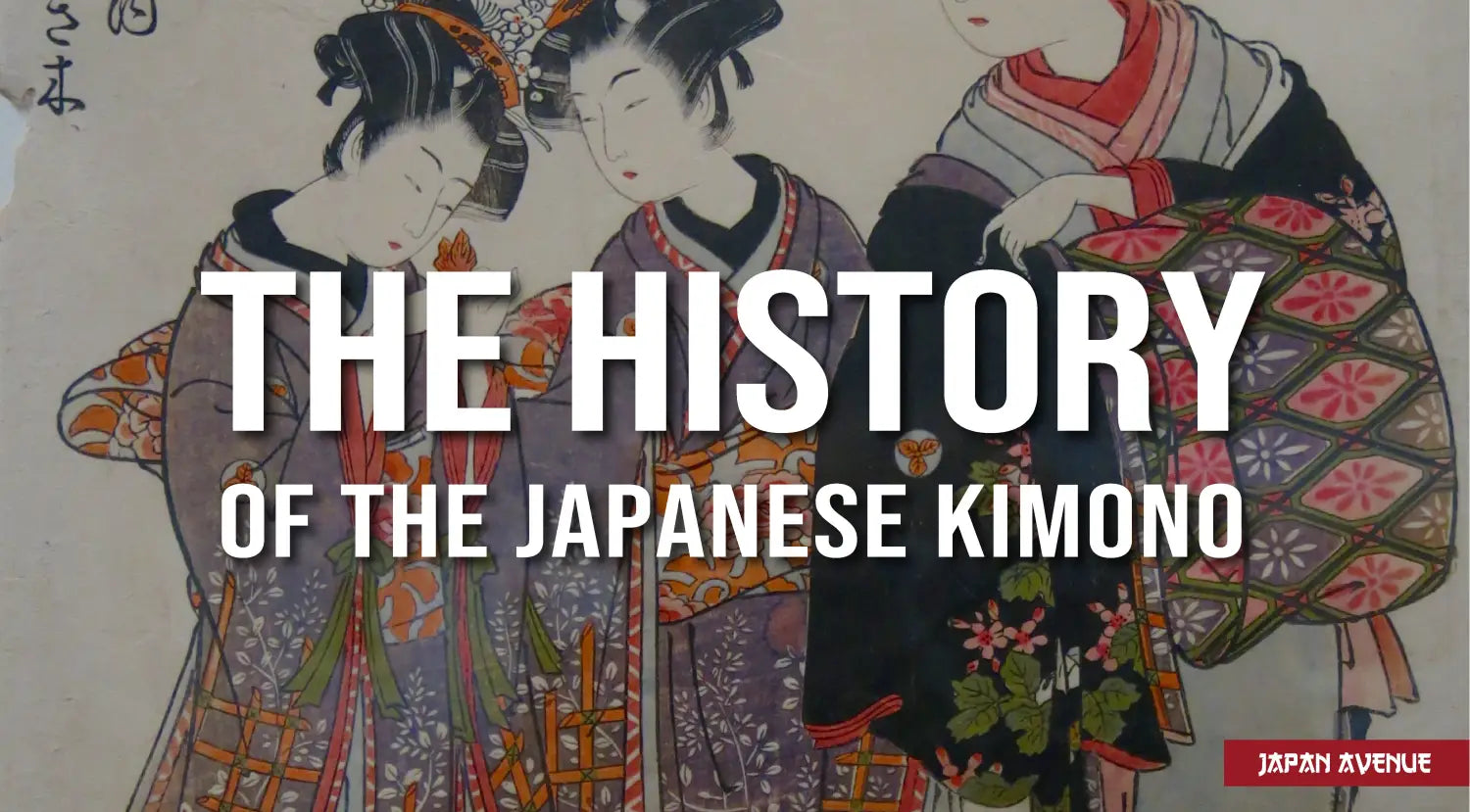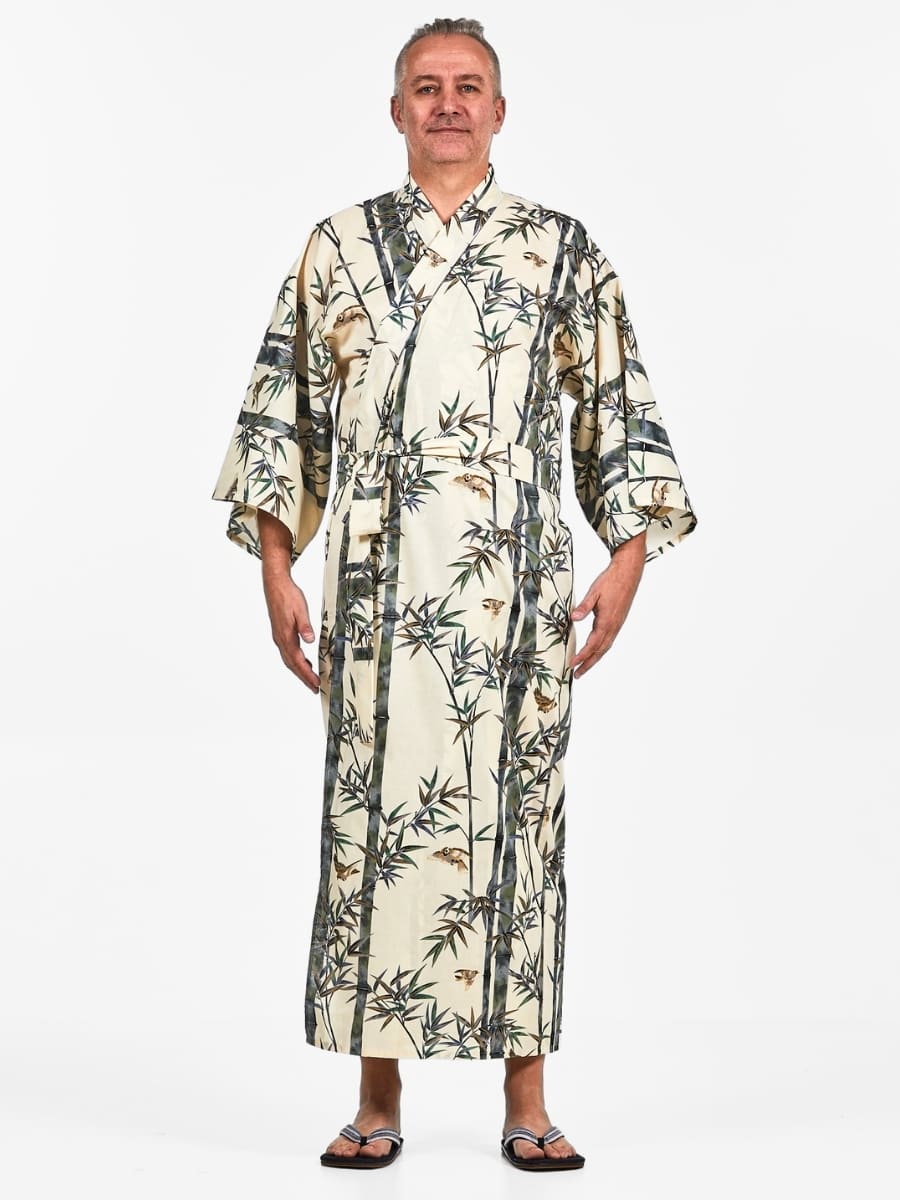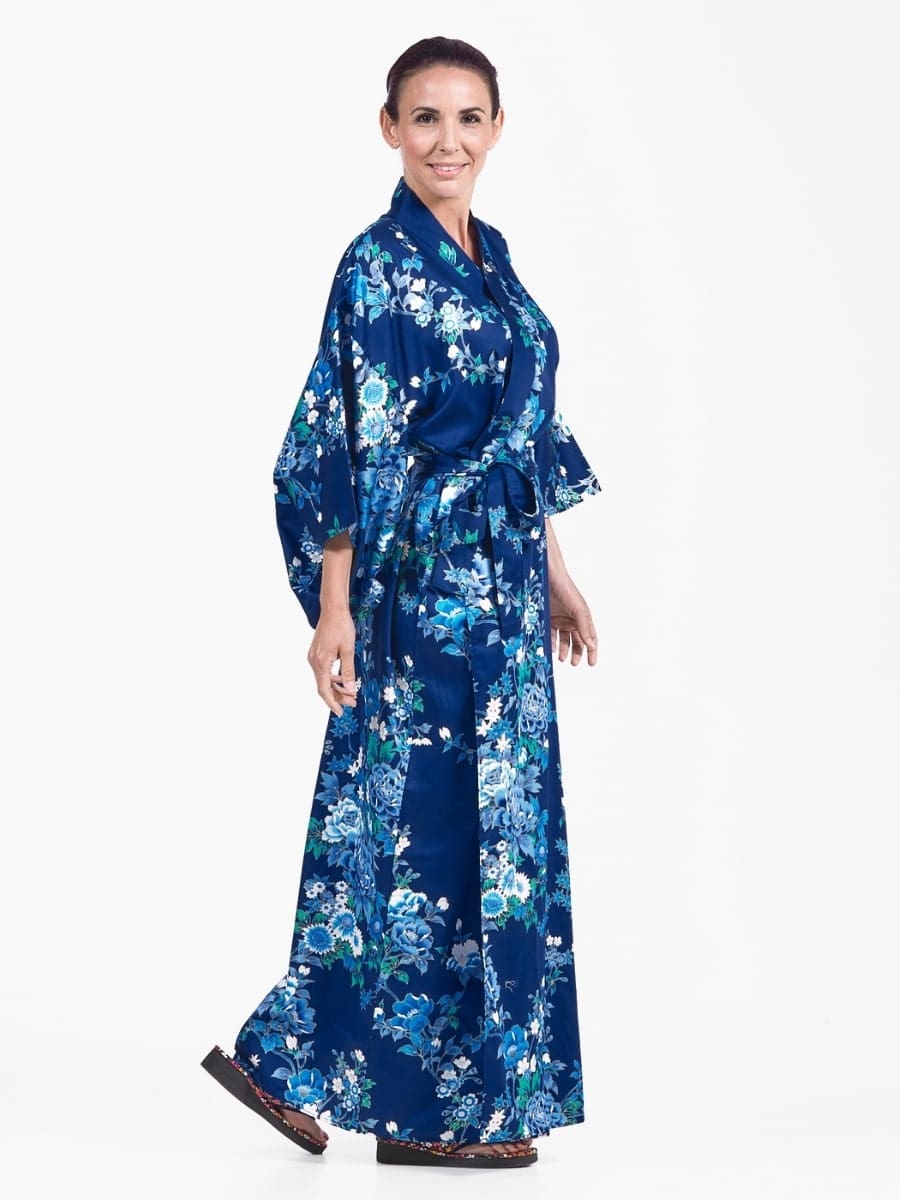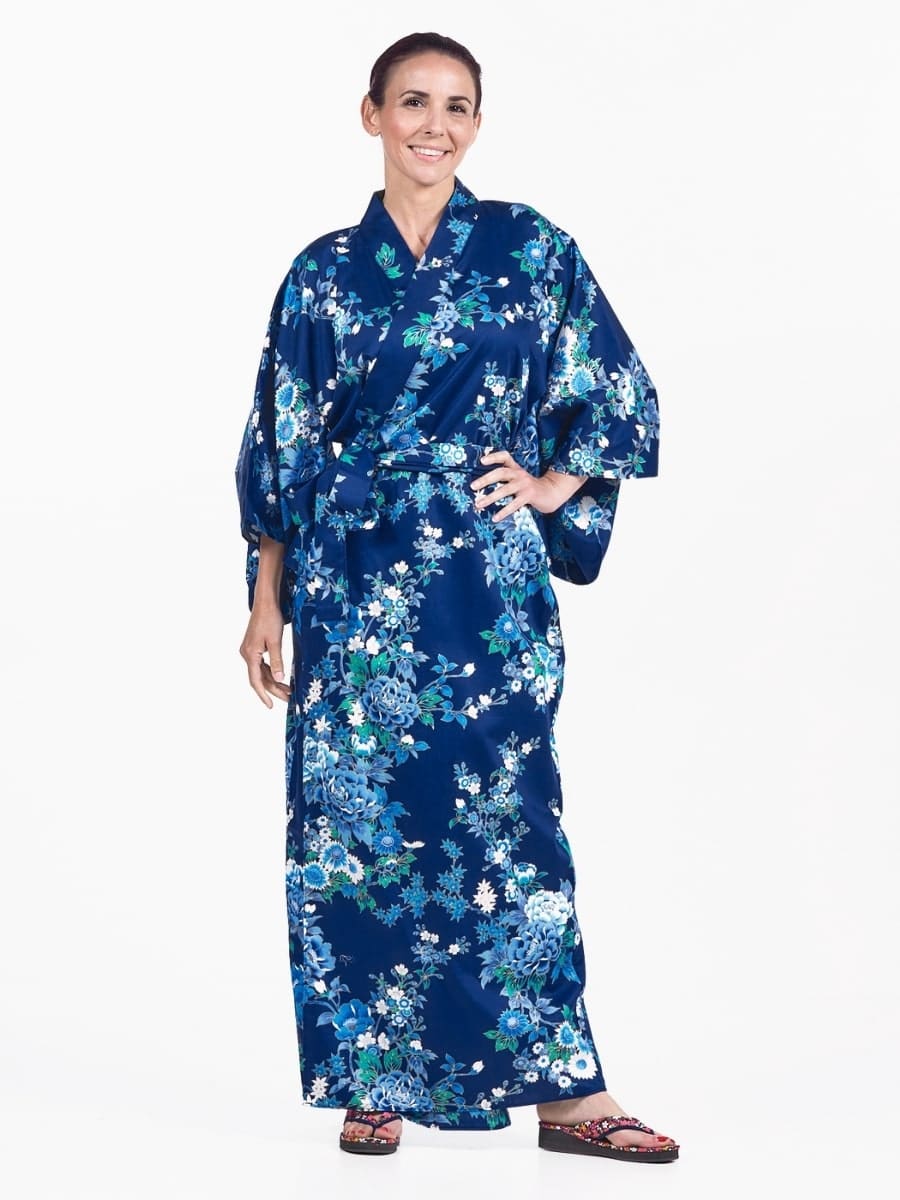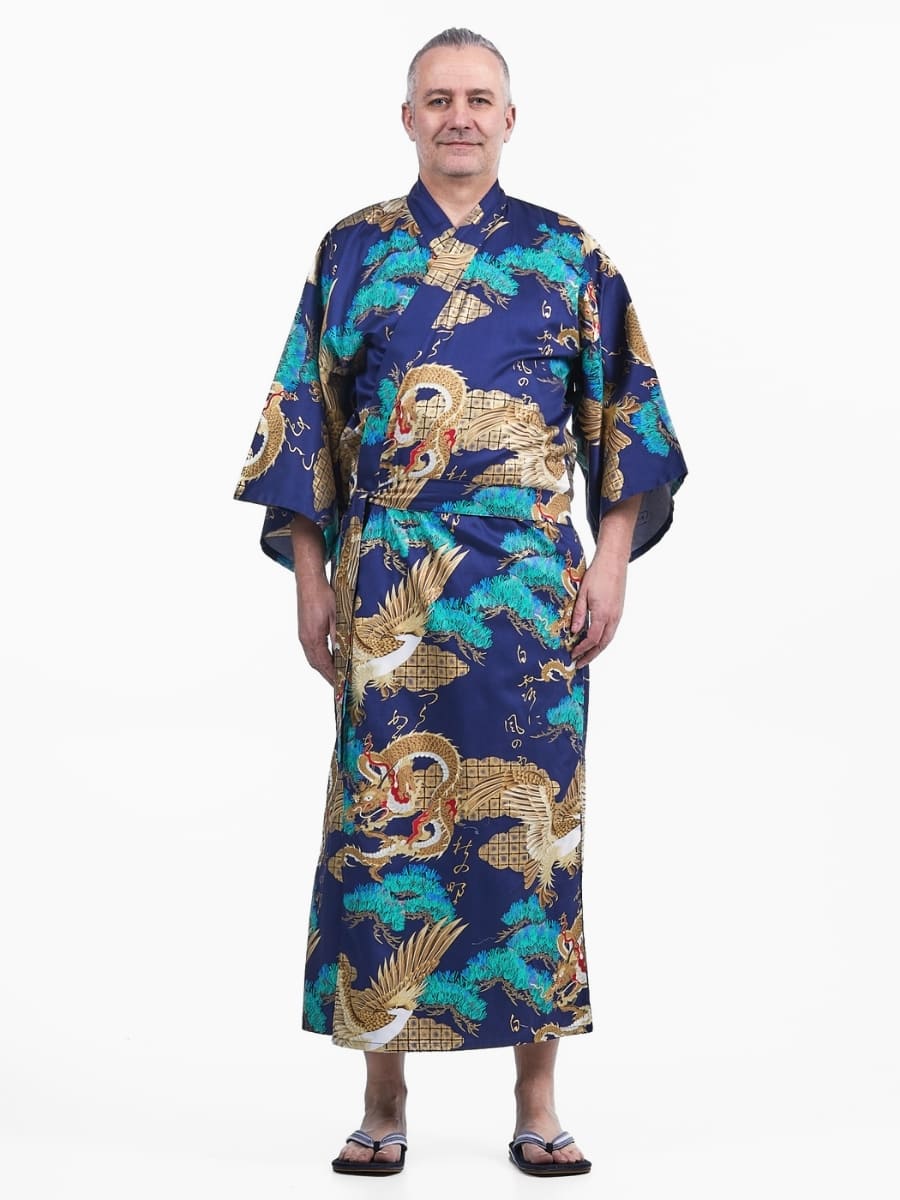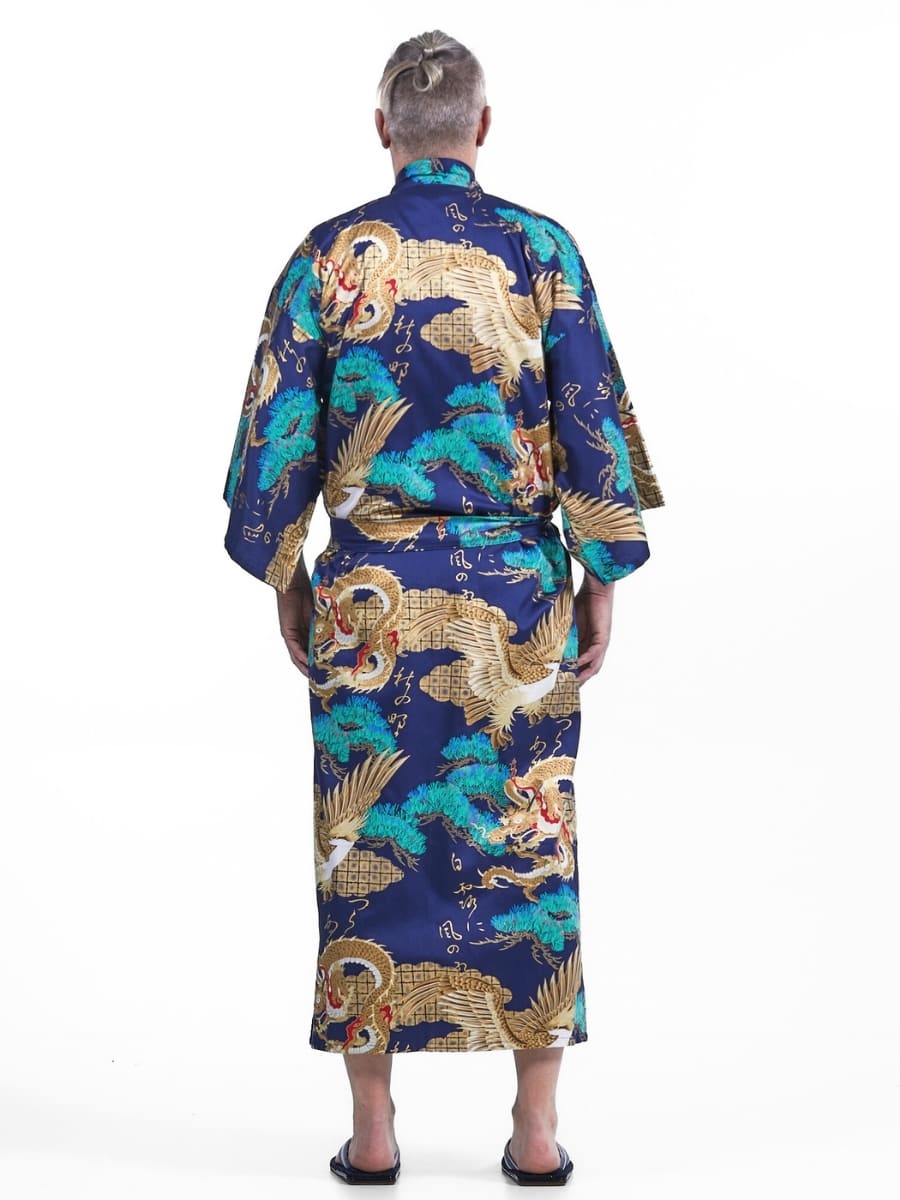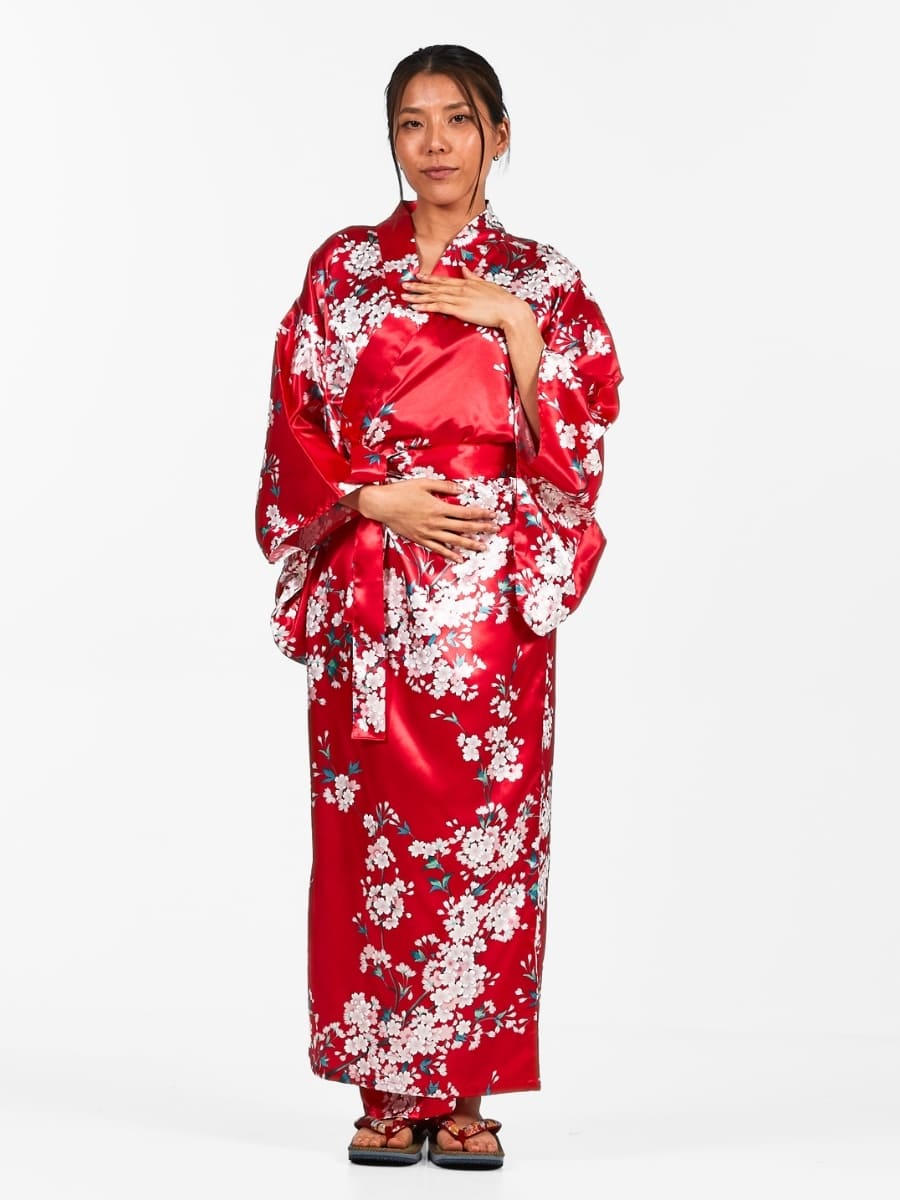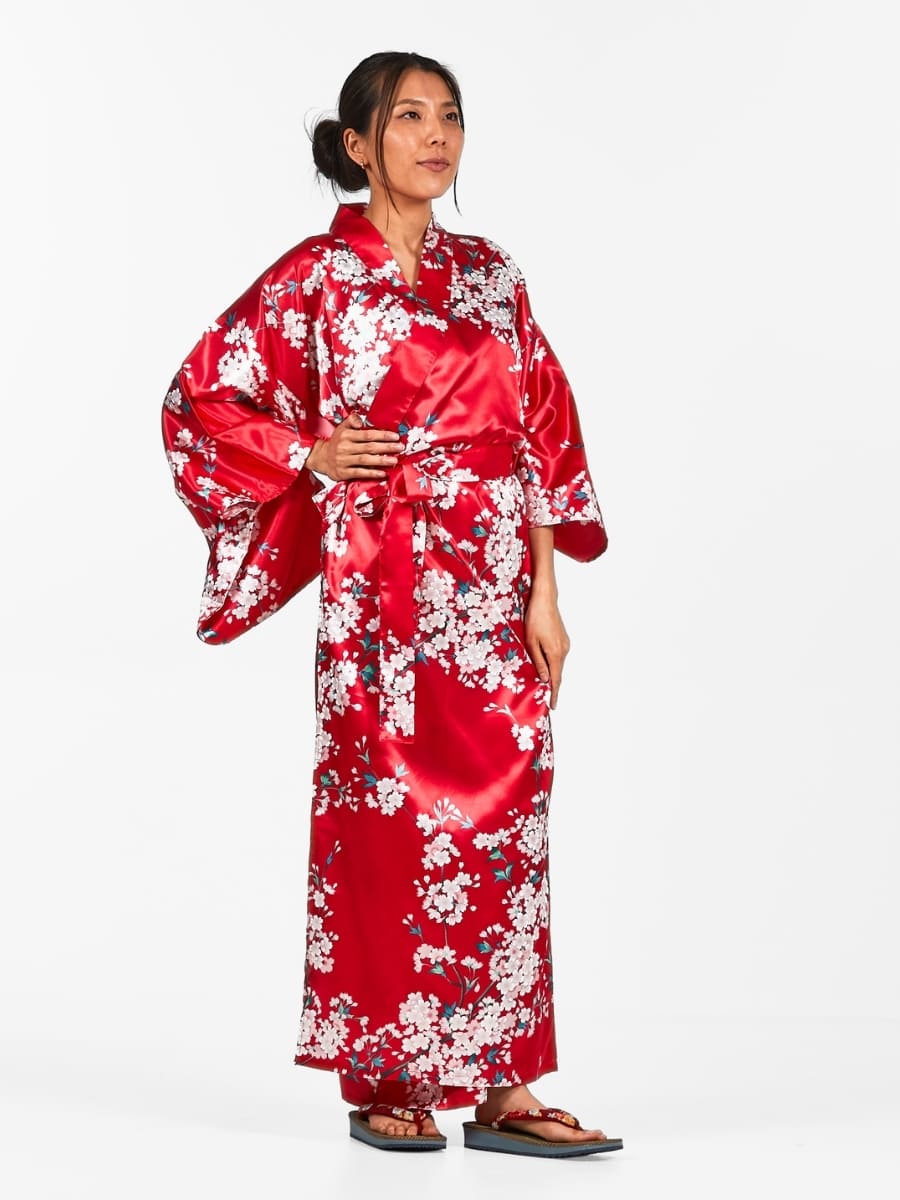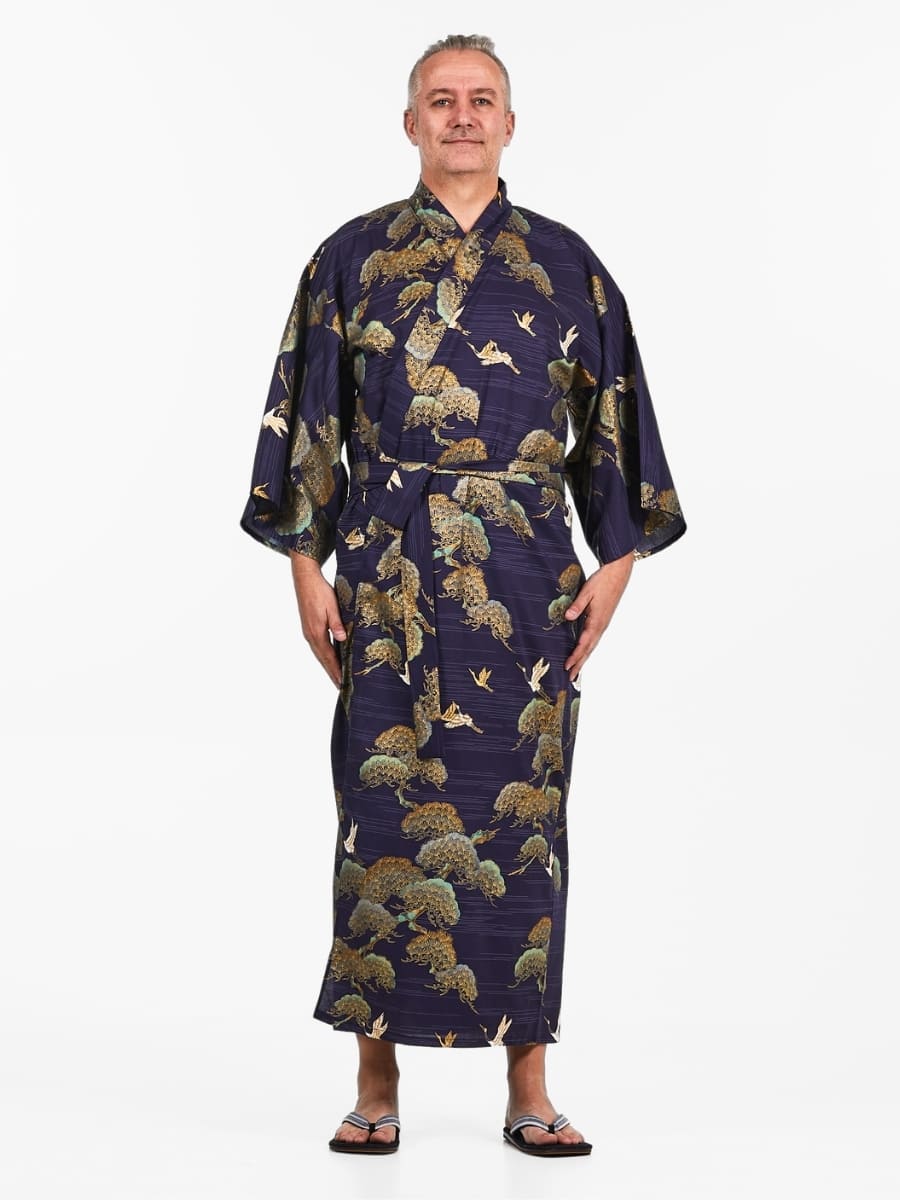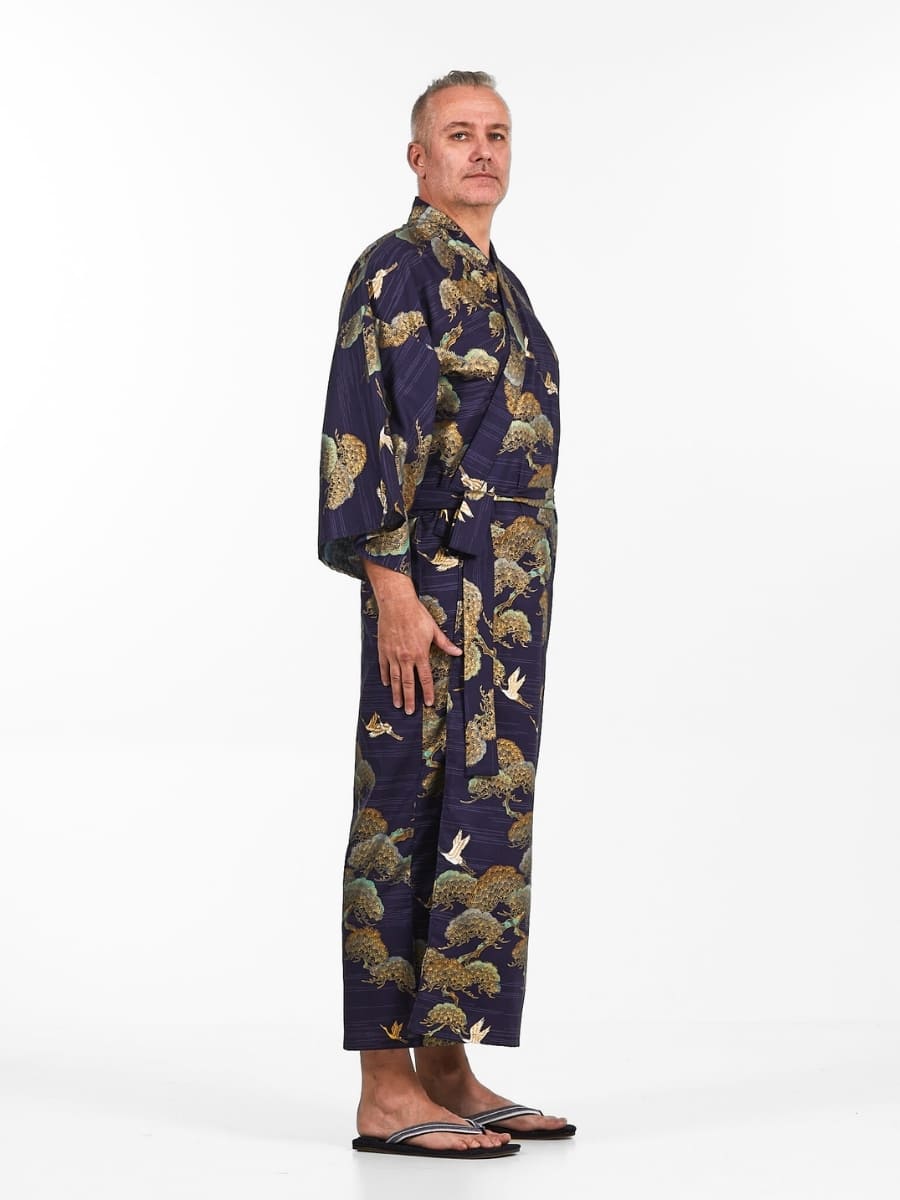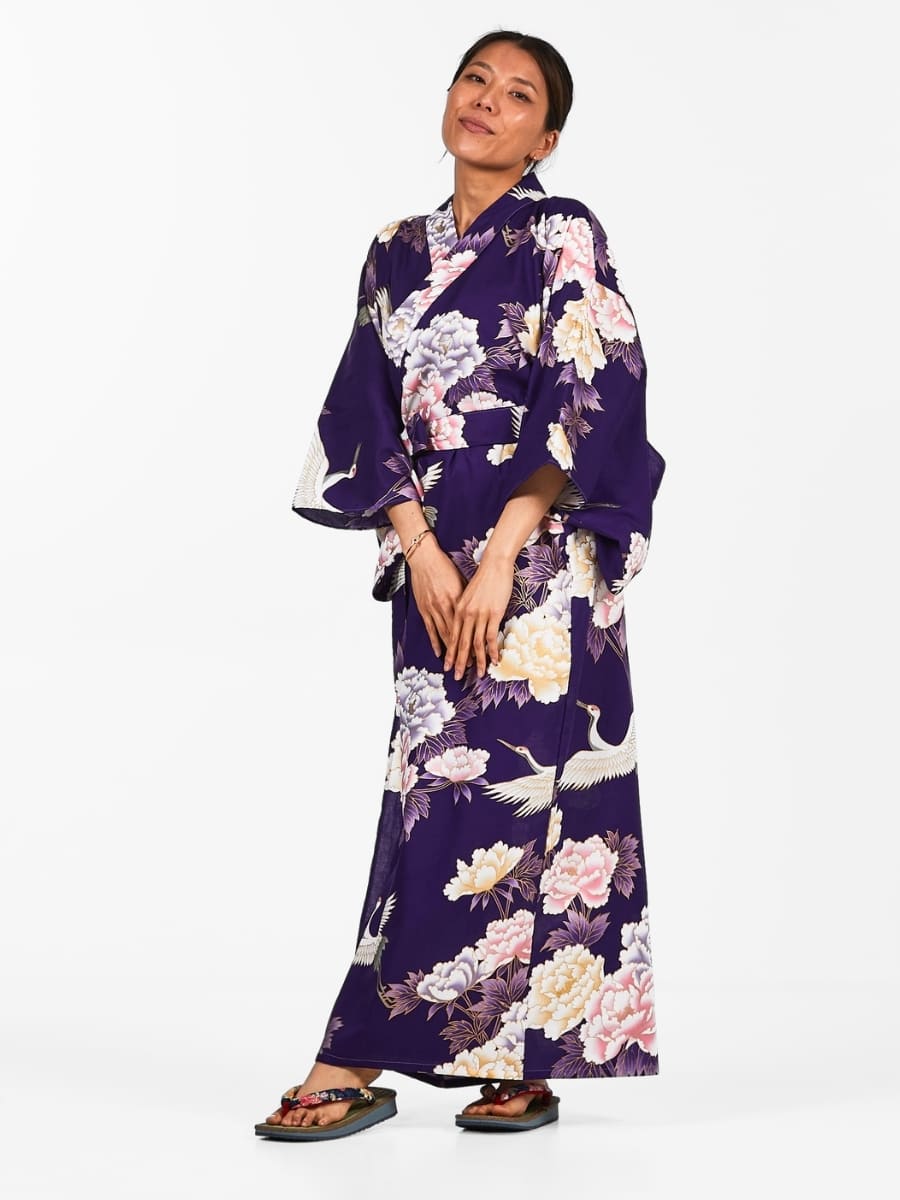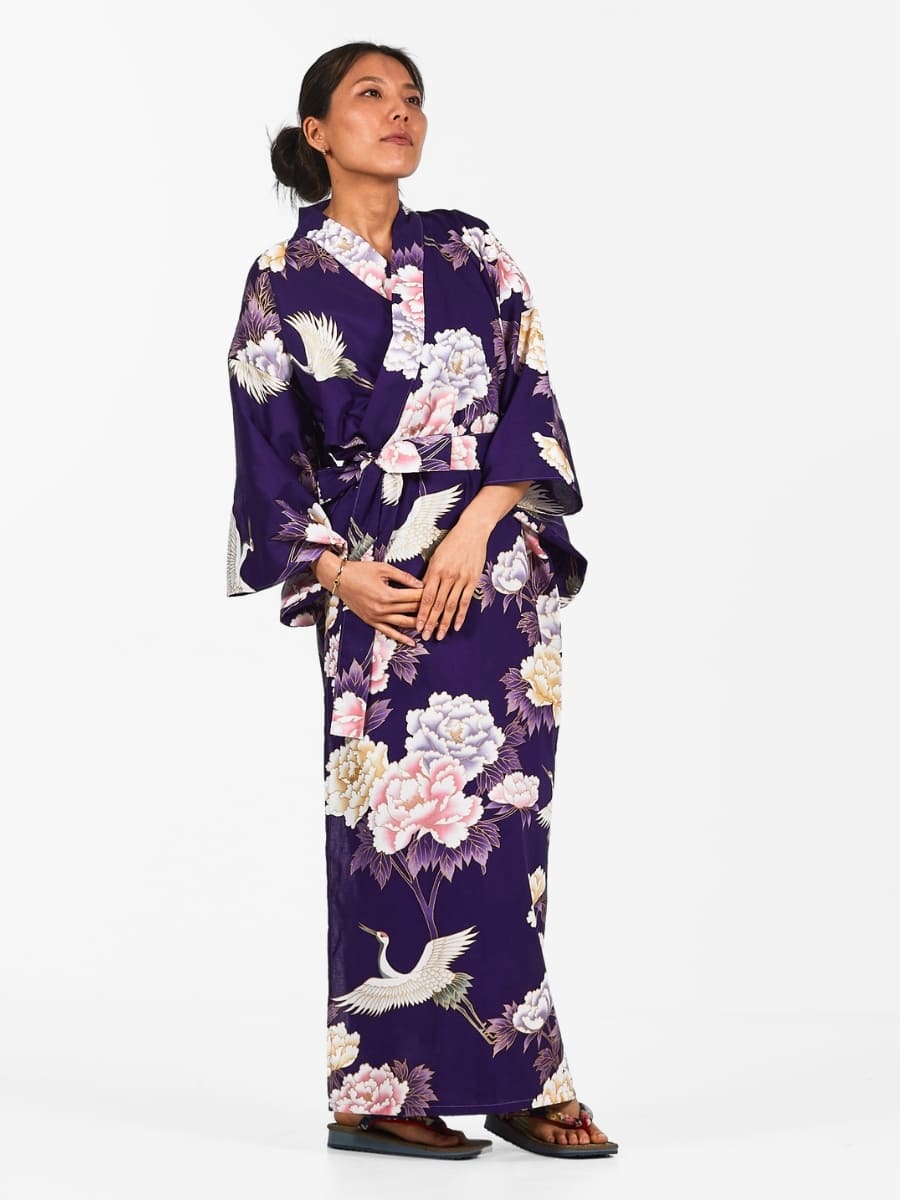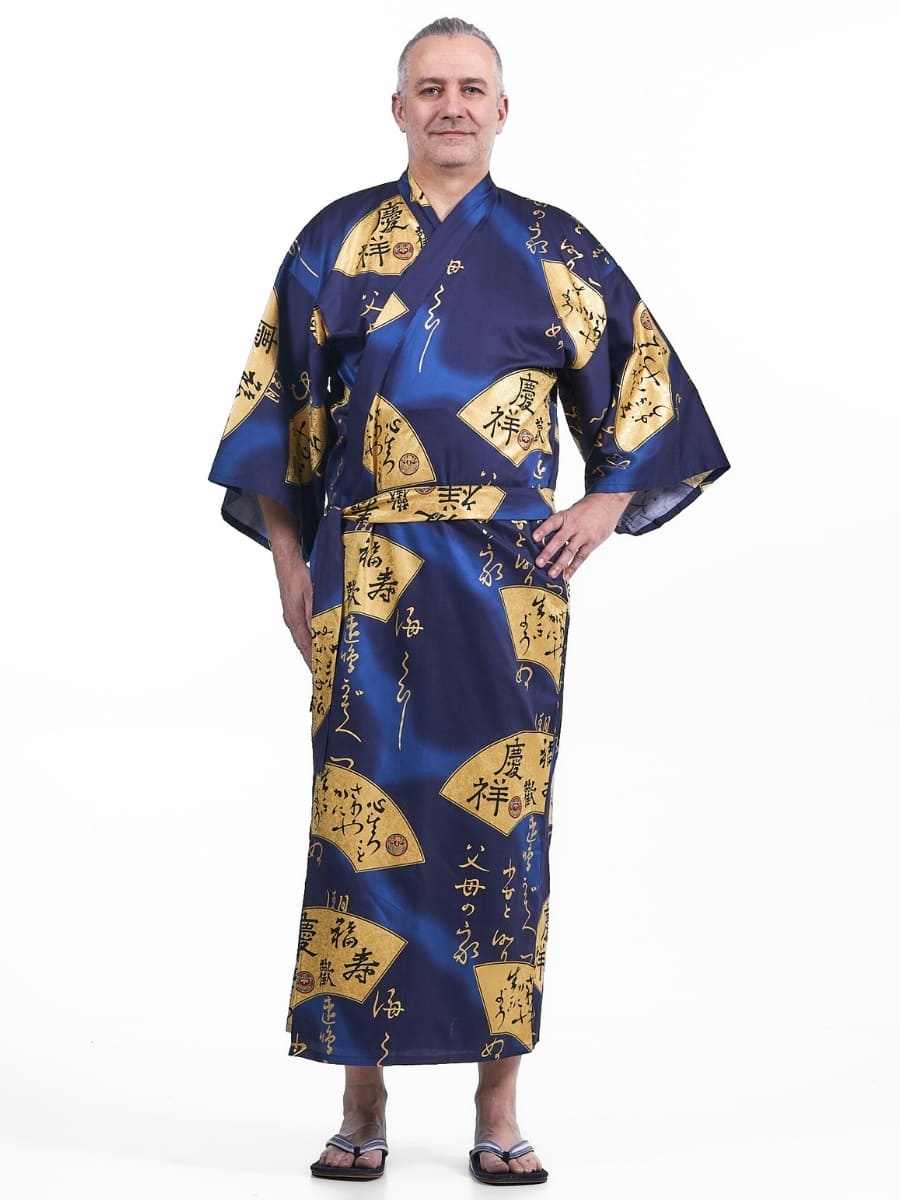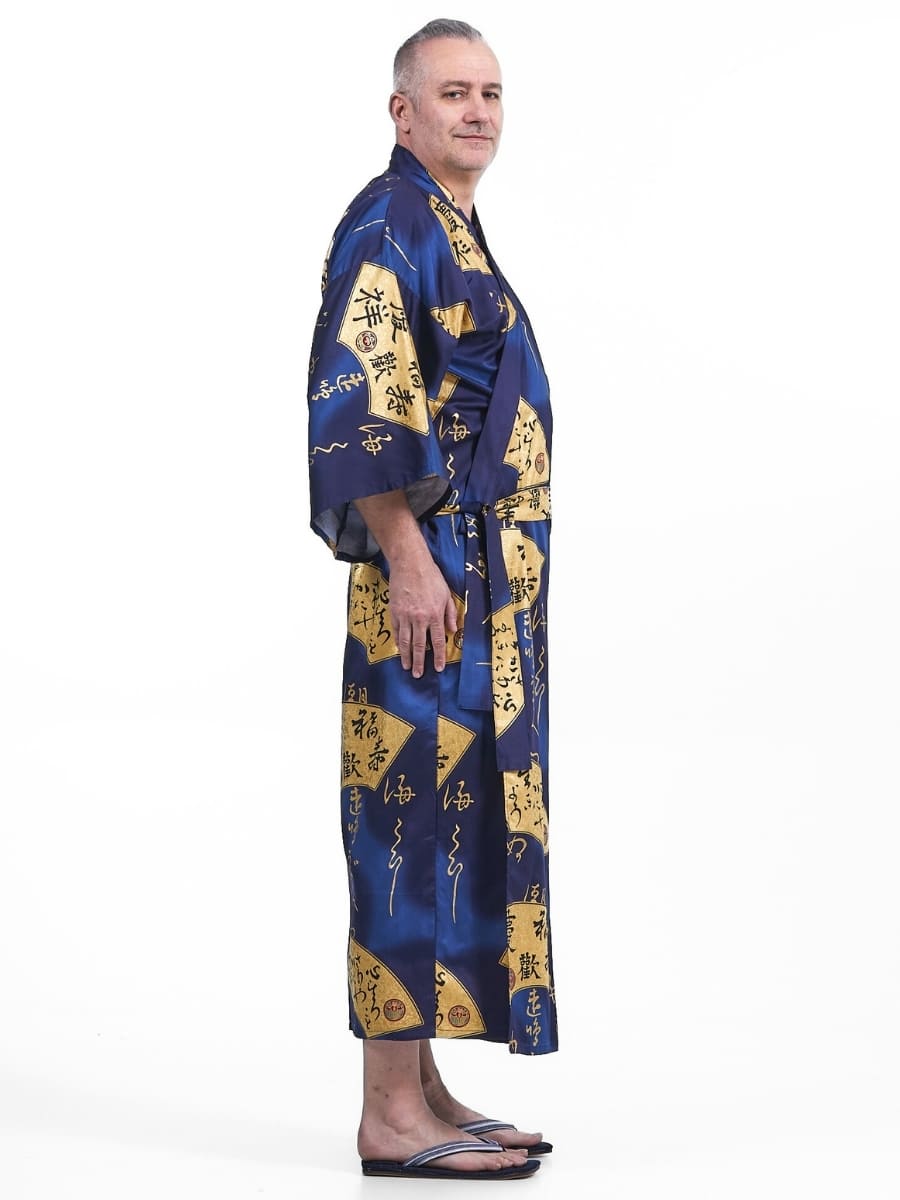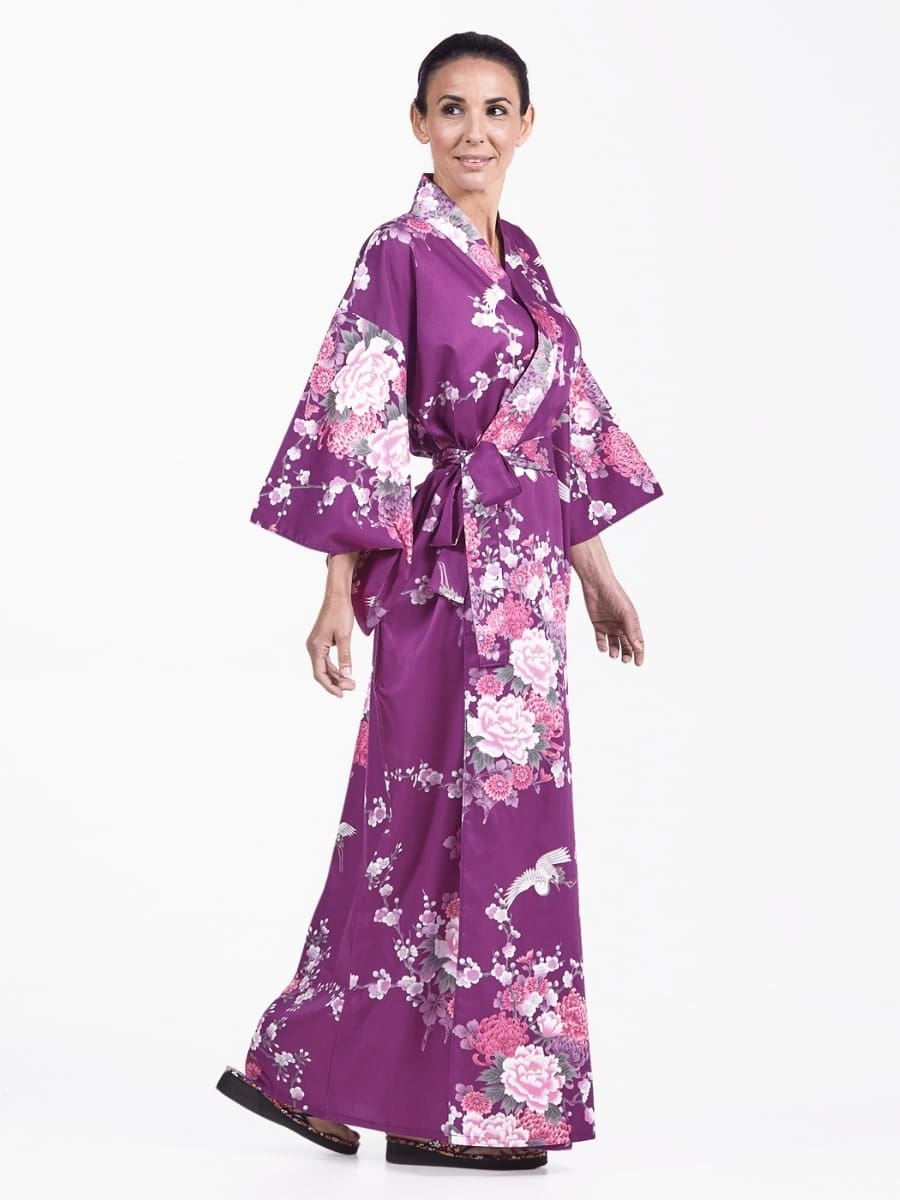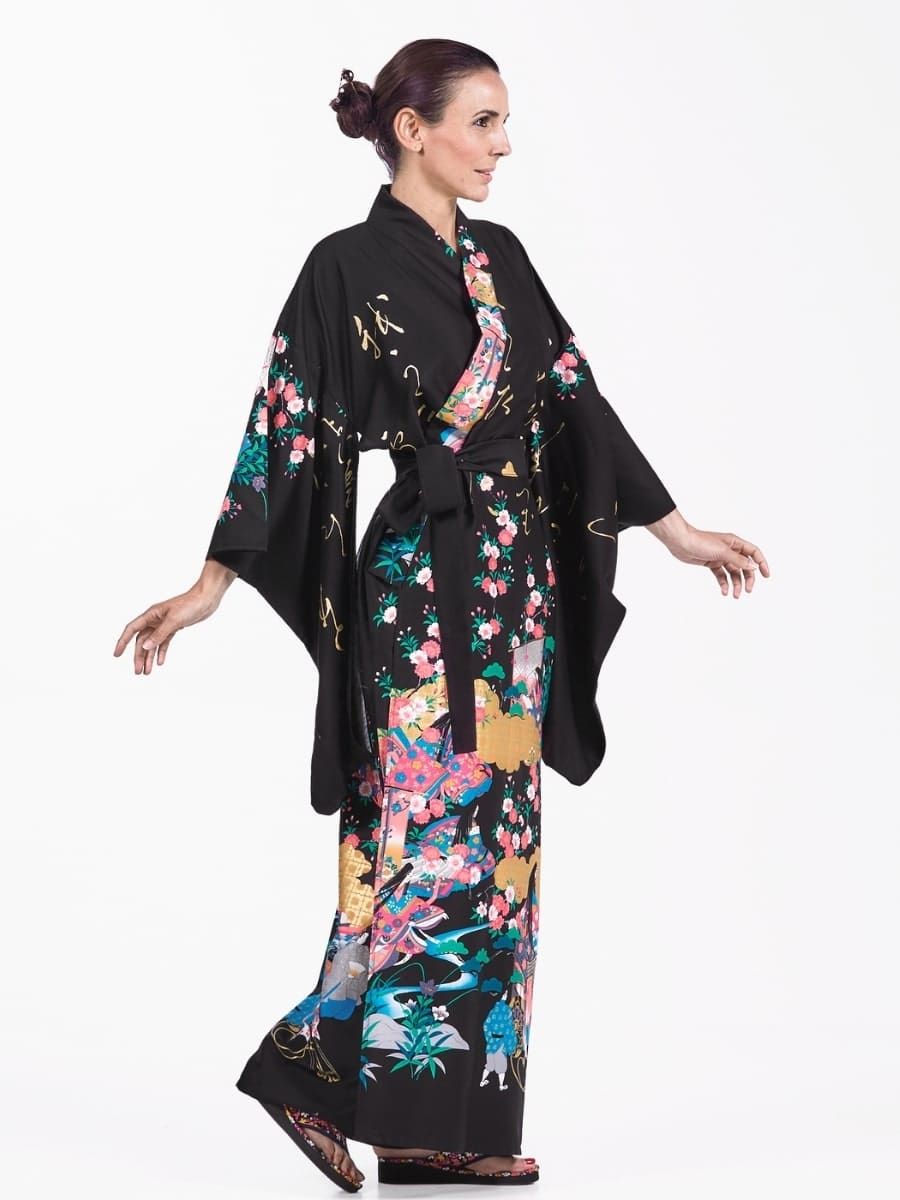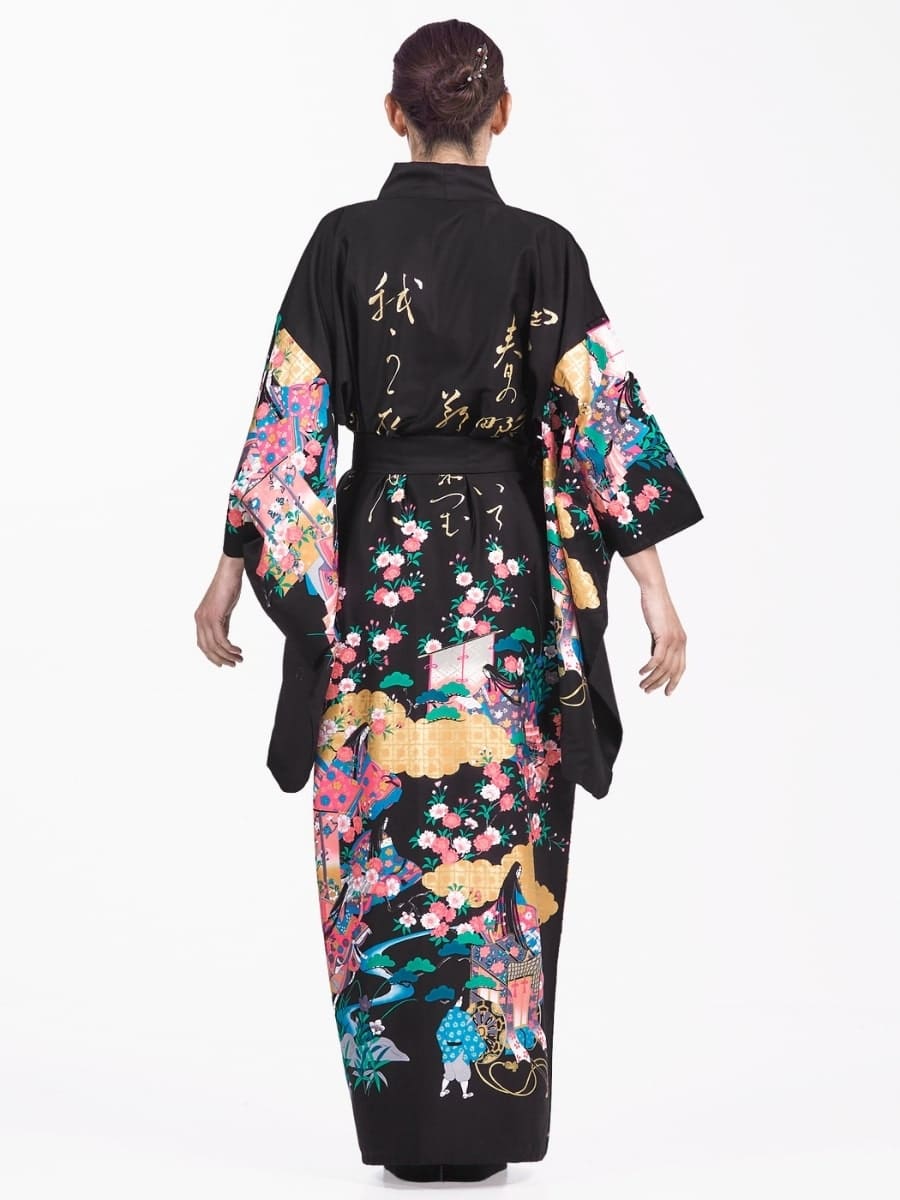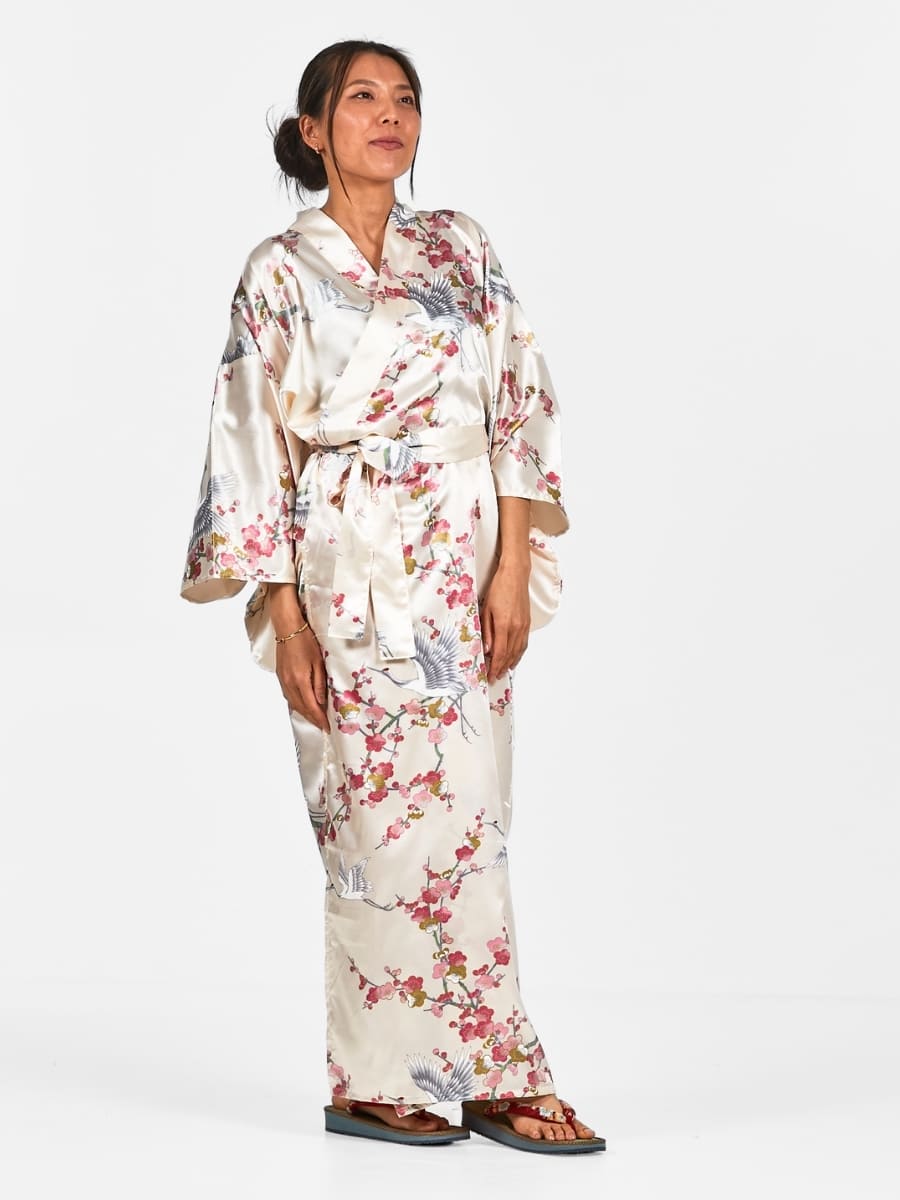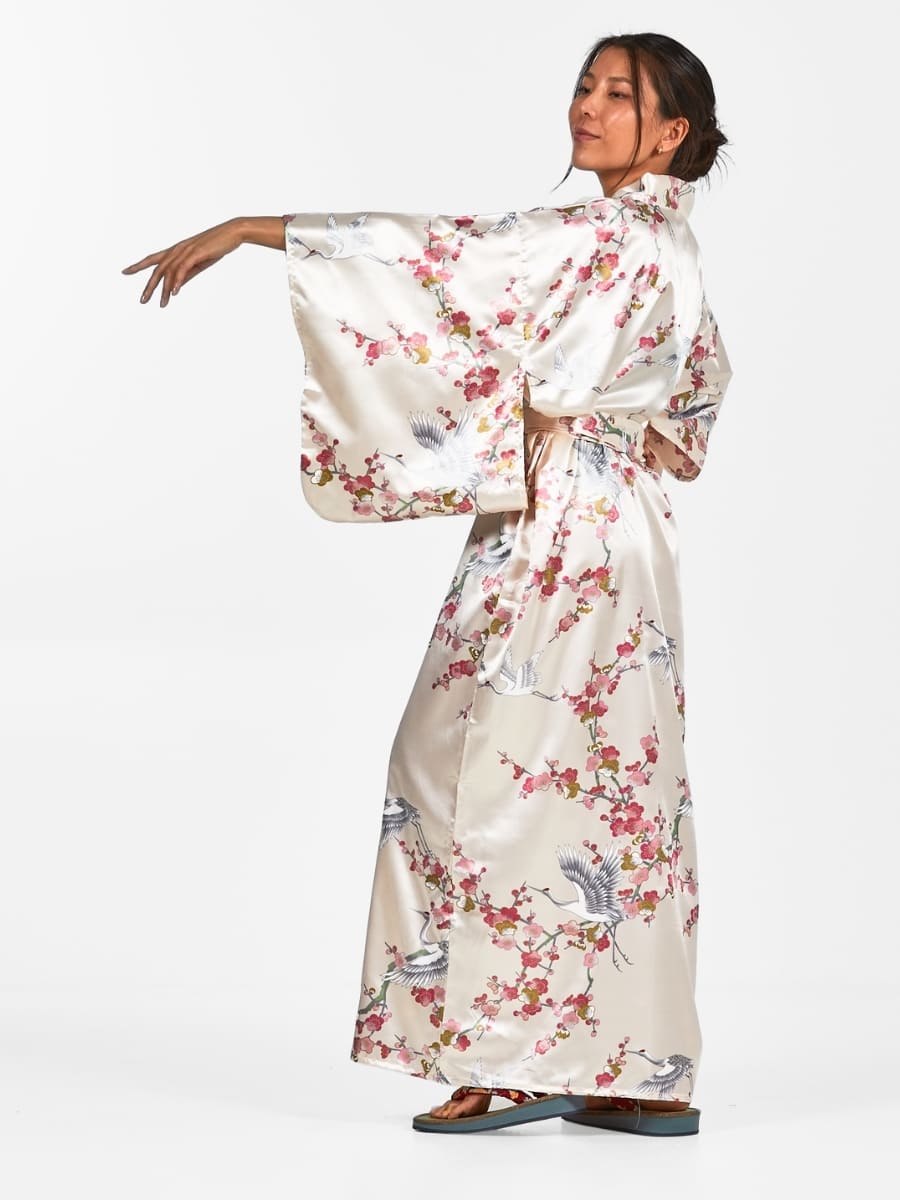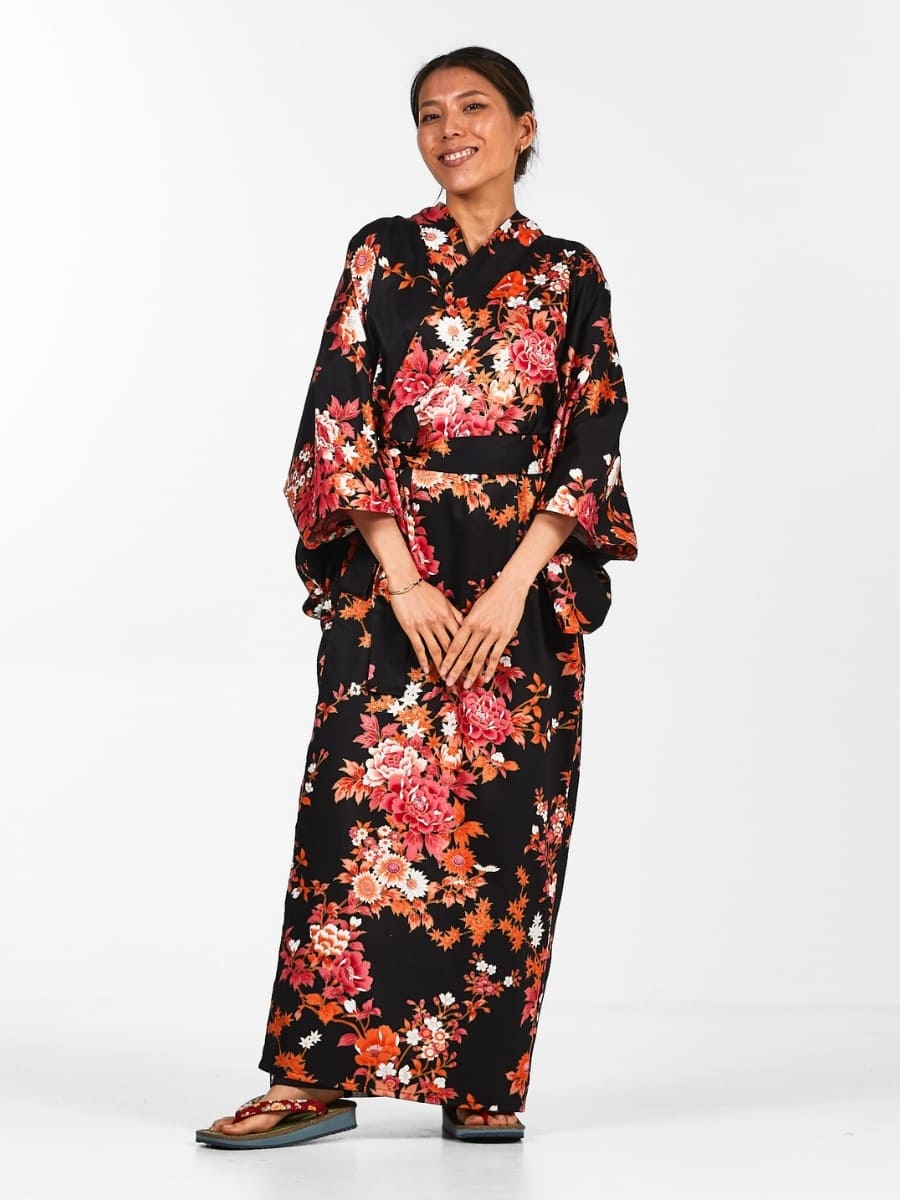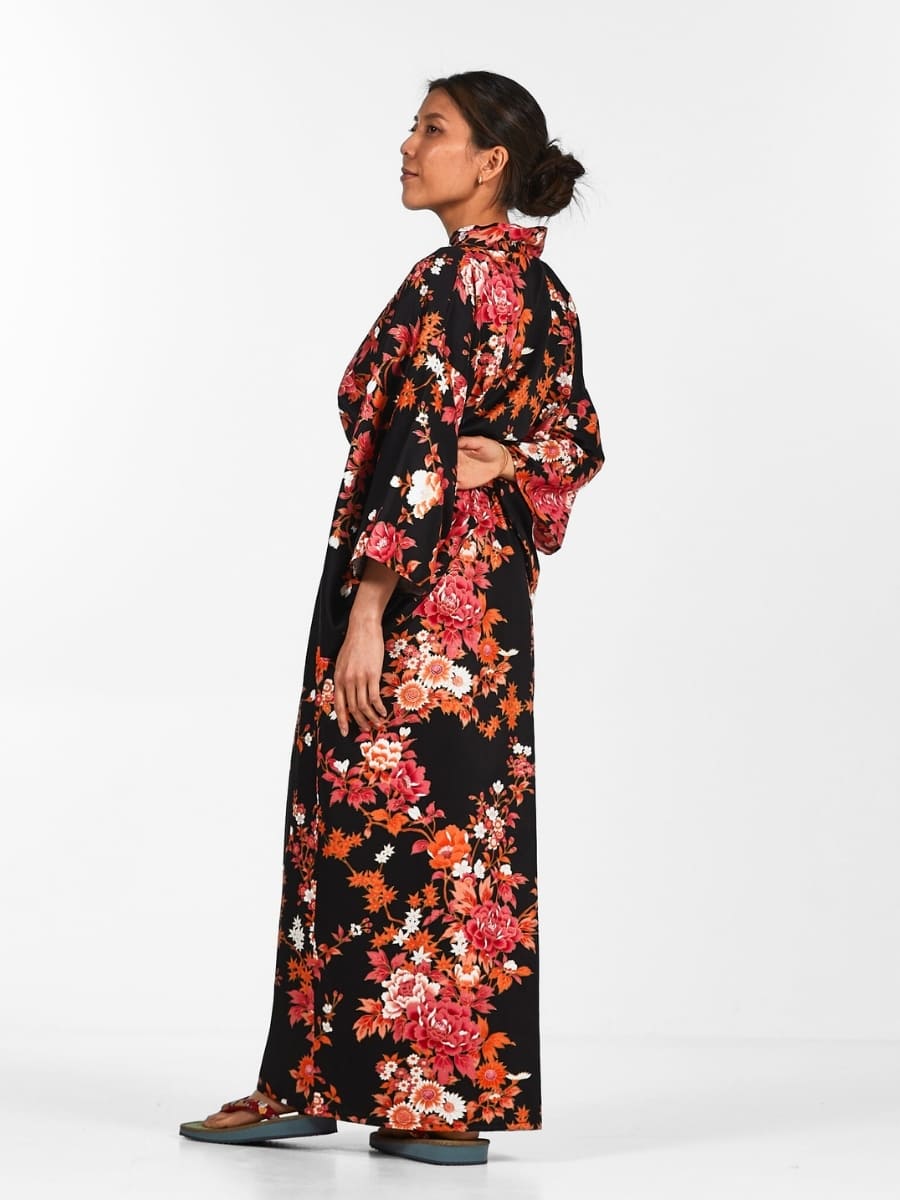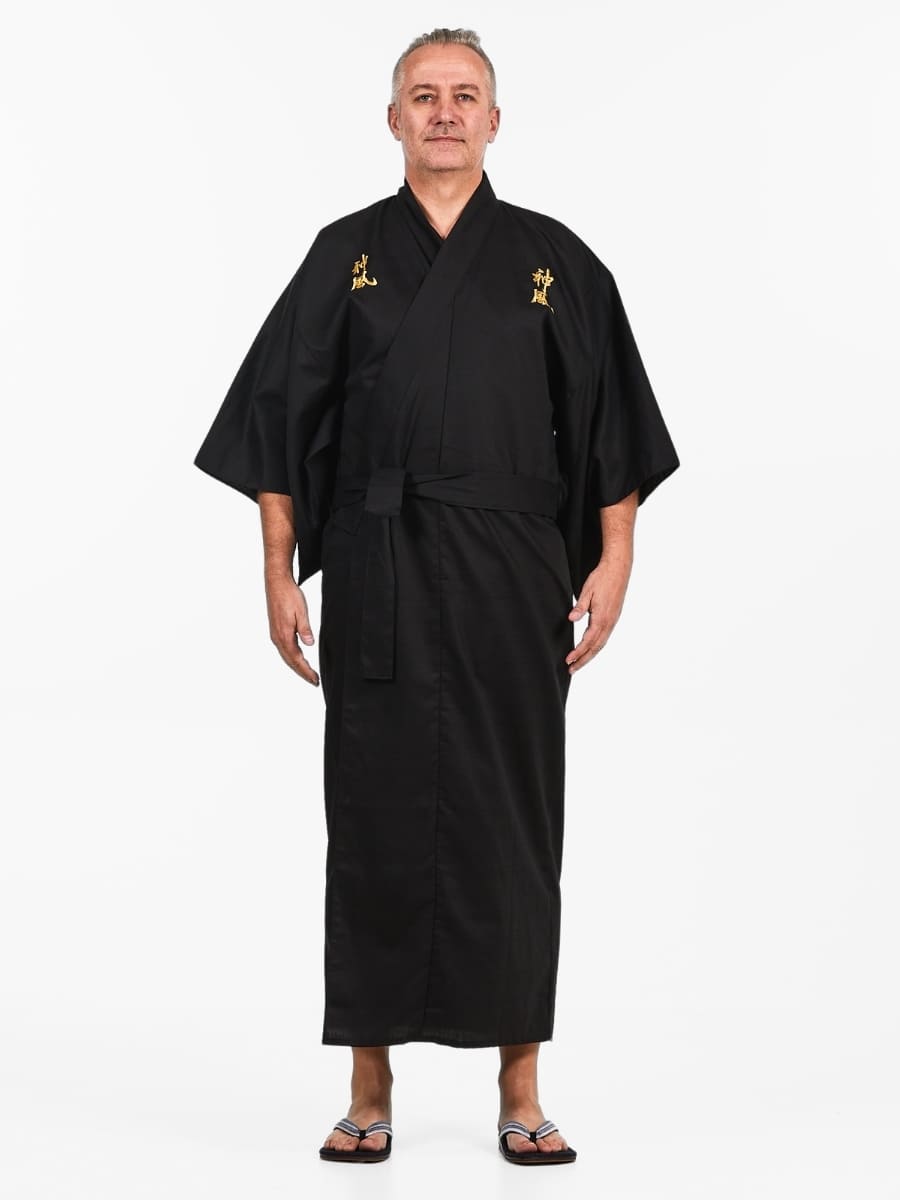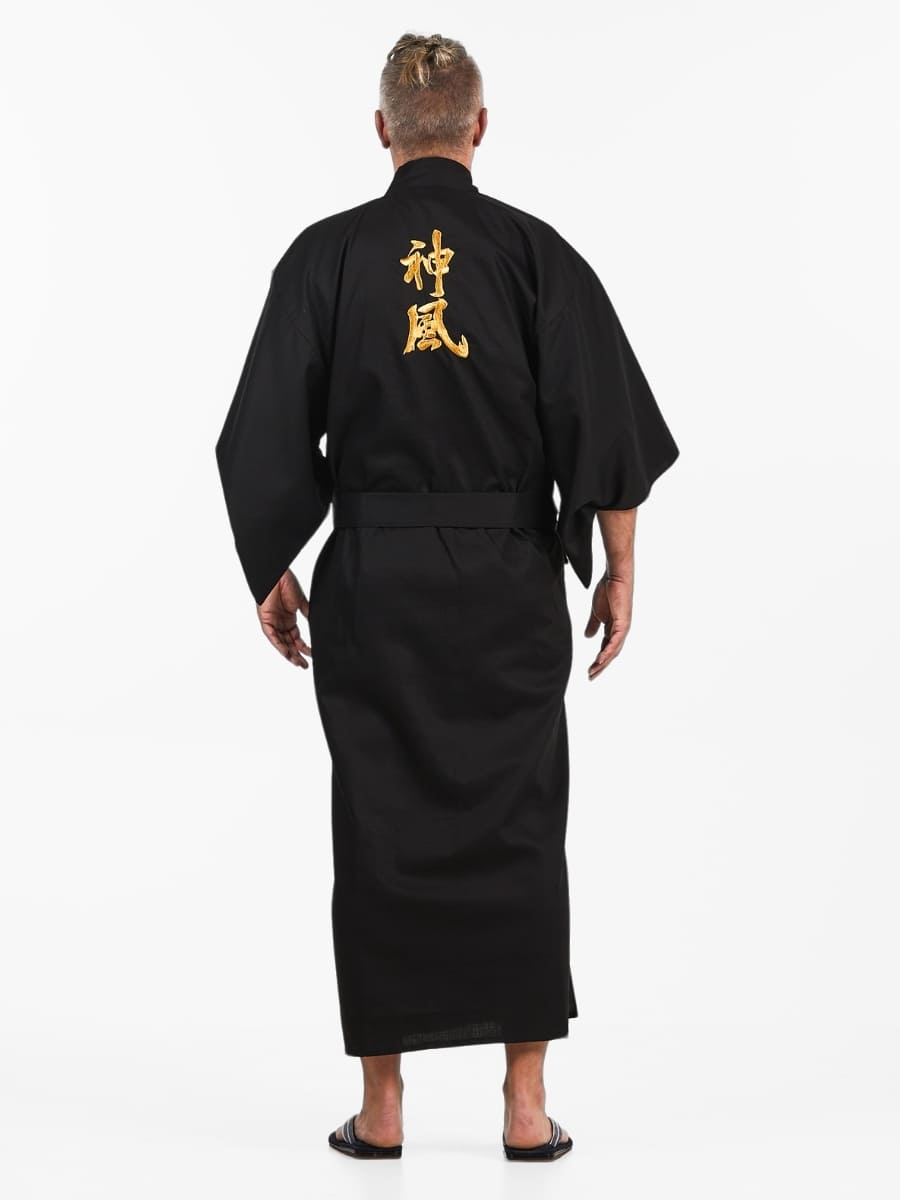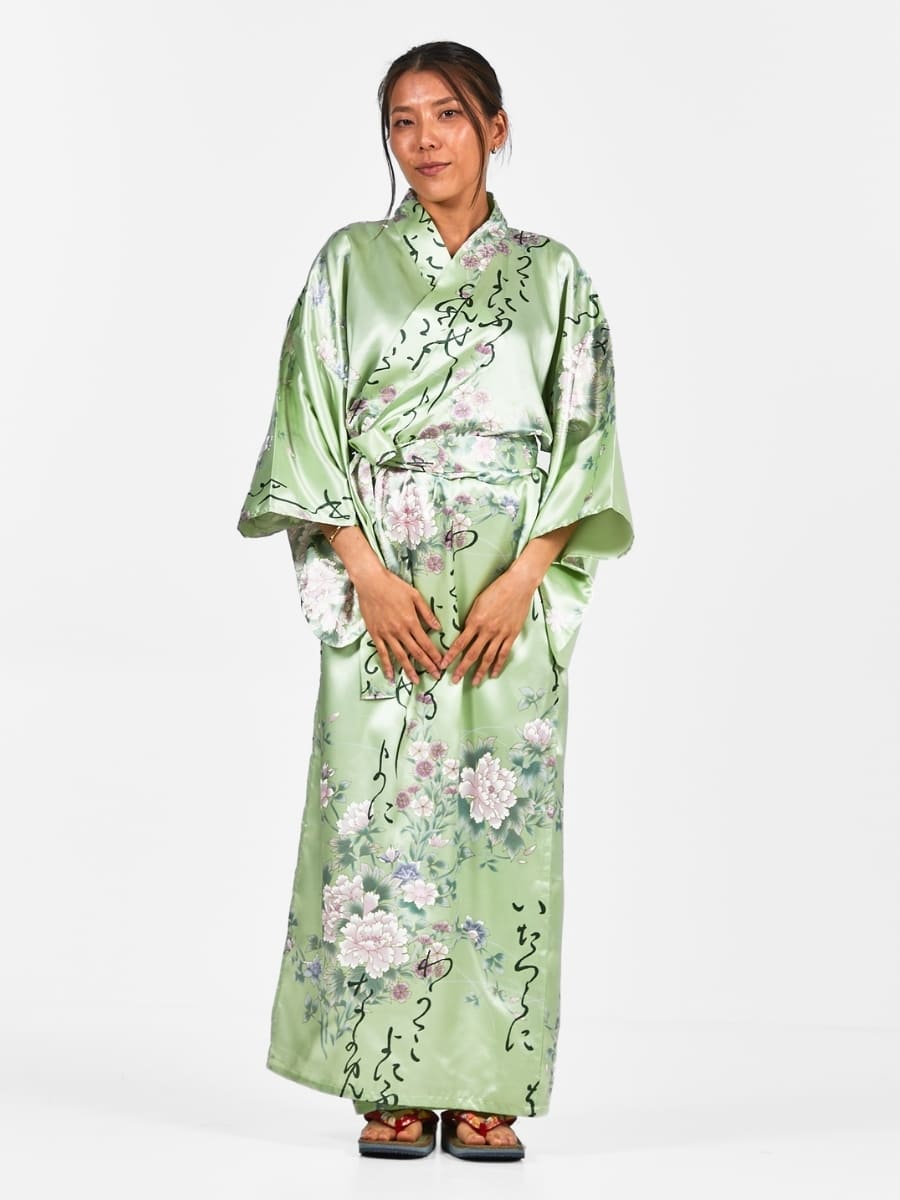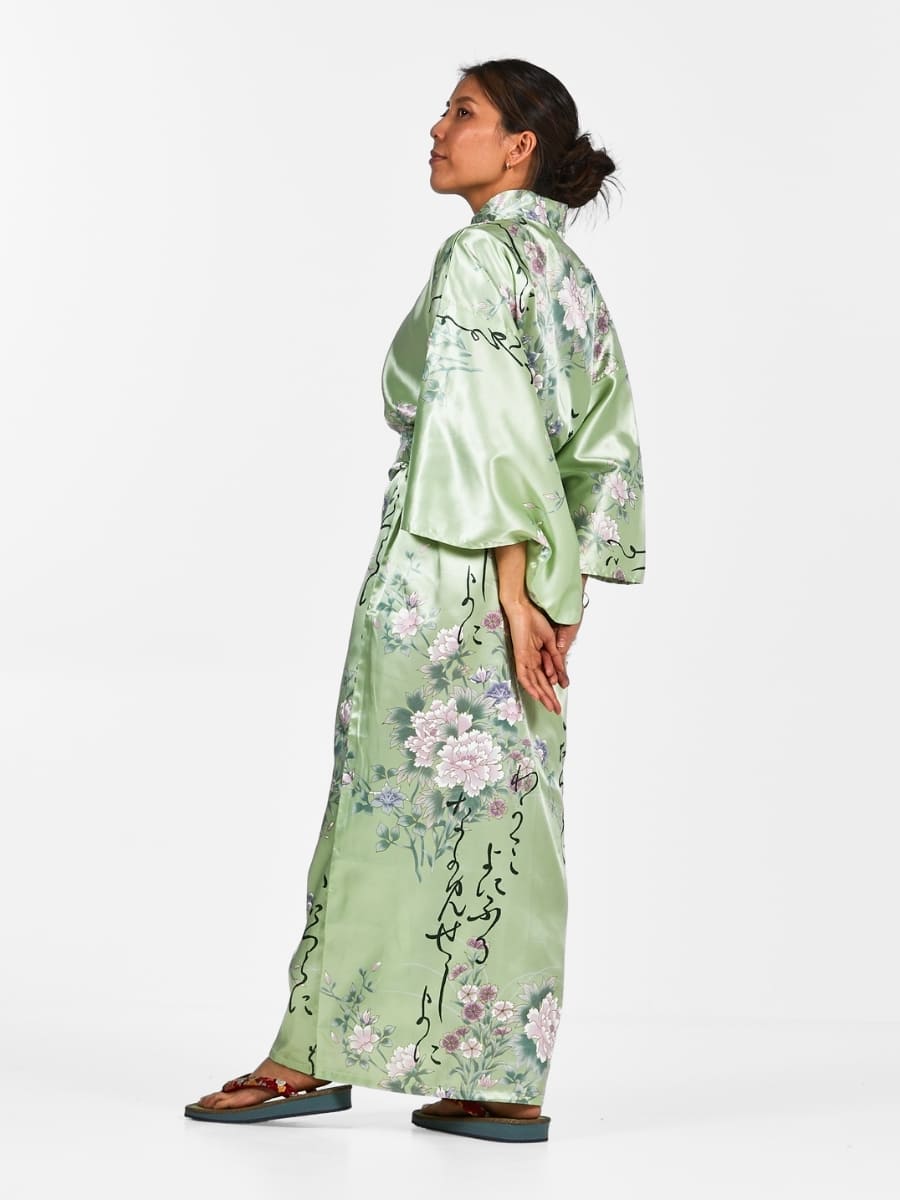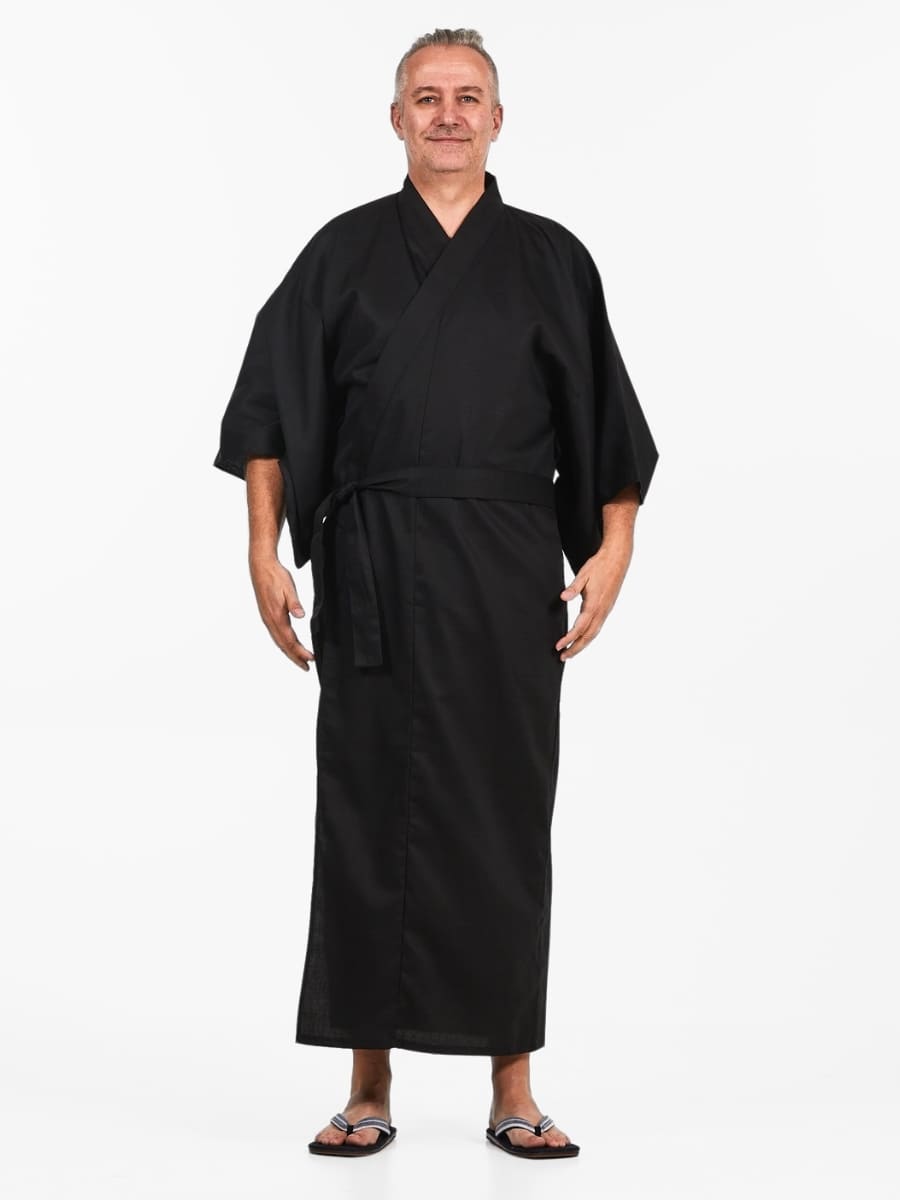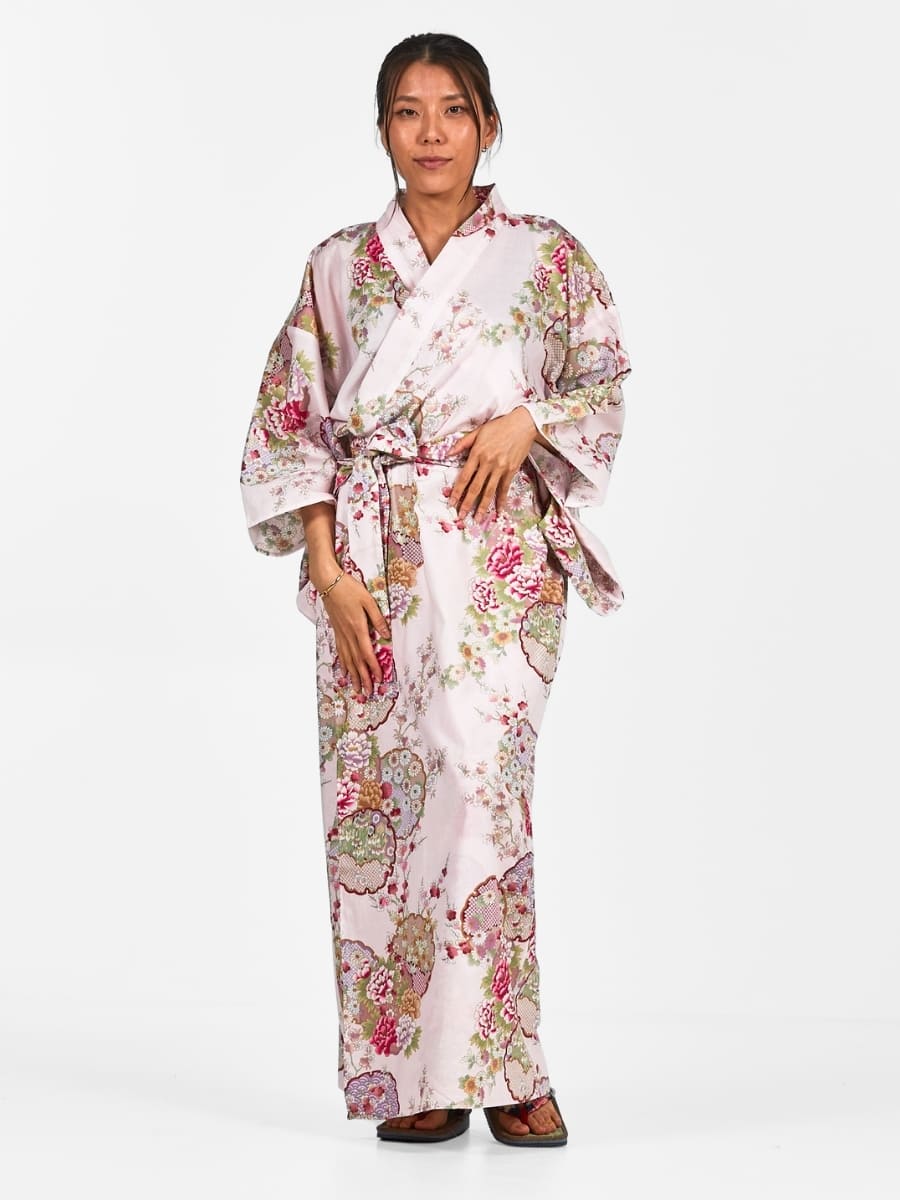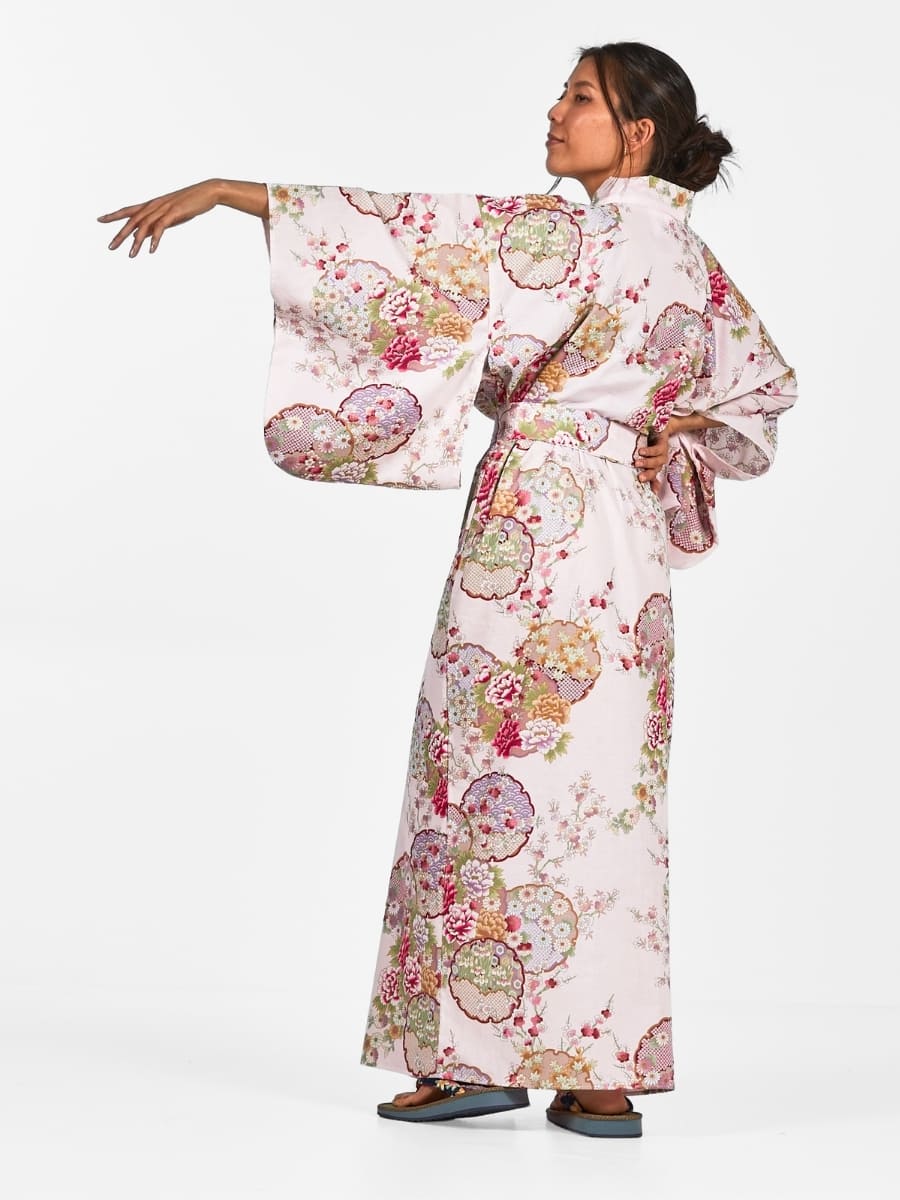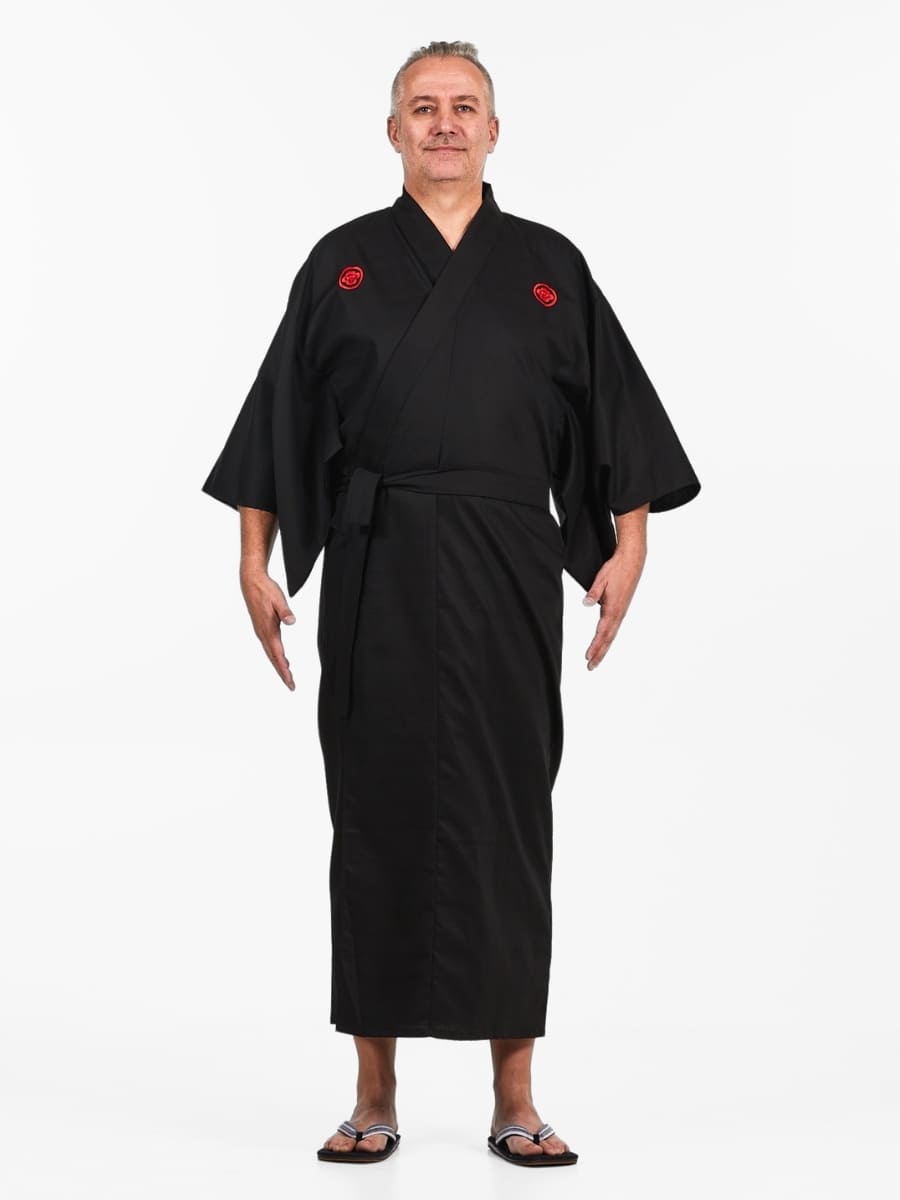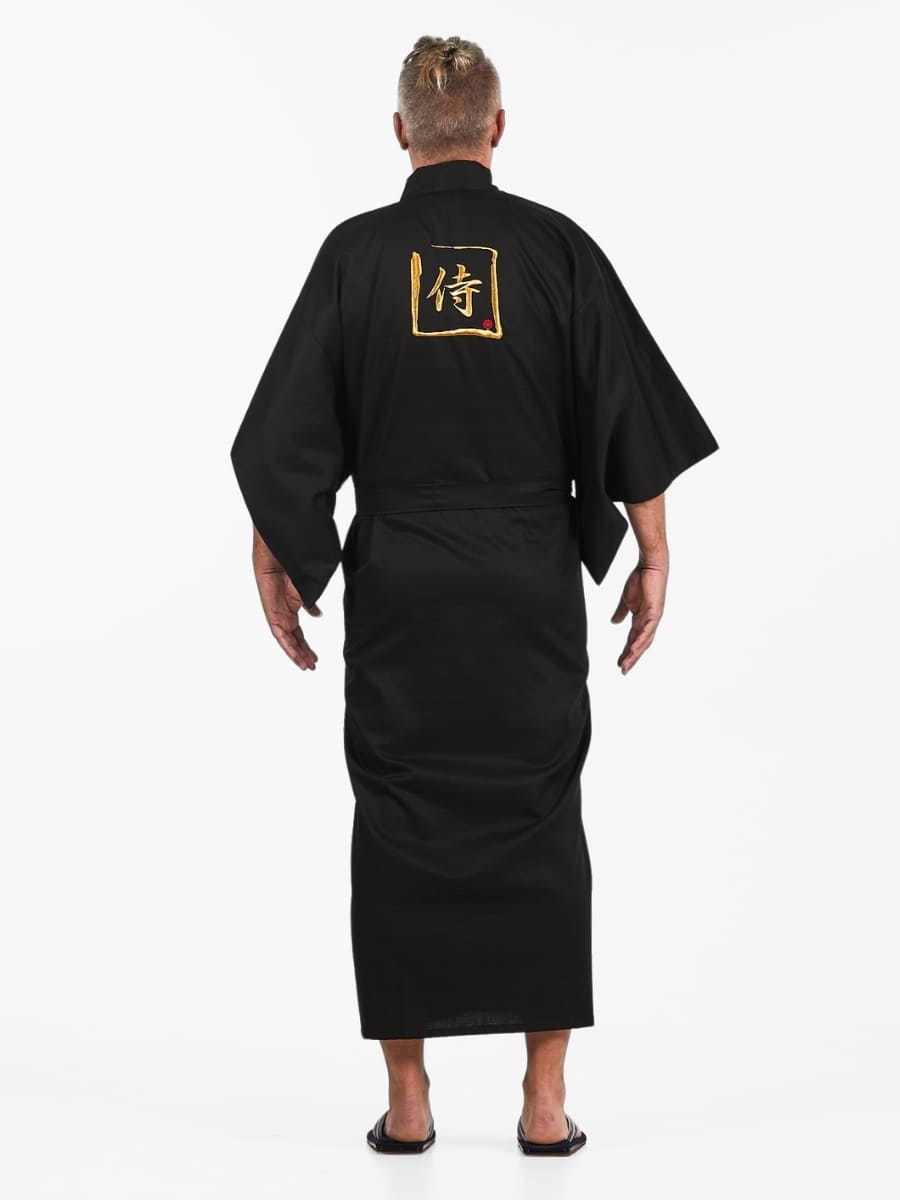In this new article about Japanese culture, we will discover the incredible history of the Japanese kimono, a traditional garment that has fascinated people since the dawn of time.
Before to start, a short etymological study of the word "kimono" (着物) is necessary. In Japanese, " kimono " literally means " something you wear on yourself " (" kiru " : to wear / " mono " : thing) and it originally referred to all kinds of clothing.
Over time, the term "kimono" gradually specialized into a specific type of traditional Japanese clothing that we all know as the... kimono. 👏 To witness the birth of this Japanese garment we will have to look far back in time, all the way to the Heian period (794 - 1185).
Nowadays, although the kimono is no longer an everyday item of clothing in Japan, it still is a traditional outfit that is worn for special events such as weddings, funerals, graduations or tea ceremonies.
Japanese culture being extremely rich and subtle, there exist many different types of kimono, each with a different name depending on its shape, its use and the person who wears it (well yes, otherwise it would have been way to easy 😅).
The origin of the Japanese kimono
If we want to be even more precise about the origin of the kimono, we will have to jump back to the Nara period (710 - 794), a time where Japan was under Chinese influence. This influence can be noticed in particular at the clothing level, and that's just how we find the direct ancestor of the kimono, the kosode. The kosode is an undergarment worn under a loose jacket, wide Chinese style pants (hakama) for men and a long skirt for women.

Kosode and Hakama (Chinese influenced skirt-trousers).
During the Heian period (794 - 1185), following a diplomatic break between China and Japan, the Japanese gradually developed a sense of aesthetics and refinement which will be at the origin of the Japanese elegance as we know it today. Therefore, great attention is given to the shape of the clothes, to the fabrics and to the harmony of the colors.
The kosode then becomes a Japanese garment made of long, straight pieces of fabric sewn together with narrow armholes. It contrasts with the osode, a garment with wide and long sleeves. Gradually, the women's kosode differentiated from the men's kosode. Throughout its evolution, the fabric is more and more worked and thickened to allow it to be worn outside.
The Japanese kimono is getting popular
The Heian period gave way to the Kamakura period (1185 - 1333) and the kosode continued to evolve at the rhythm of Japanese society. Warriors would wear the osode to attend ceremonies and adopted the silk kosode for everyday life.

On the left, a warrior class kosode. On the right, an aristocratic kosode.
During the Muromachi period (1336 - 1573), the kosode was more and more often worn without pants and completely lost its status of underwear. The used fabric became thicker and heavier in order to turn the kosode into an outdoor garment, adaptable to all seasons.
Due to the absence of hakama, the Chinese style pants usually worn with the kosode, it was necessary to find a new method to hold the garment together. As you may have guessed, this is how the obi belt came into being.
To learn more about the wonderful history of this belt, please read our article on the history and types of kimono obi.
The Momoyama period (1573 - 1600) witnessed a real blossoming of the textile market which greatly contributed to the enrichment of merchants. Merchants and their wives also started to wear the elegant kosode, just like the warriors.
As this Japanese garment became popular among the Japanese people, the term "kimono" emerged and became a synonym of the kosode.
The evolution of the shape, fabrics and patterns of the Japanese kimono
In the Edo period (1600 - 1868), both terms kosode and kimono were used to designate a garment with short and narrow sleeves and a more or less long piece of fabric under each sleeve.
The kimono gradually began to diversify into different forms, names, occasions, seasons and social status. An example is the furisode, a kimono with extremely long sleeves reserved for young girls and unmarried women.
 Example of the furisode, a kimono with long sleeves.
Example of the furisode, a kimono with long sleeves.
The kimono has become the emblematic garment of Japan and plays a unifying role within the Japanese archipelago. At that time, all Japanese people were wearing the kimono, regardless of their age, sex or socio-economic status.
This loose-fitting Japanese garment with its straight fit has many advantages - advantages that have largely contributed to the fact that it has become a widely popular garment, adopted by all on a daily basis.
- Versatile and easy to wear
- Adaptable to all body types
- Easy to fold for storage
- Adaptable to all seasons: simply layer in winter and choose a light and breathable fabric in summer
During the first half of the Edo period, the kimono fabric was elaborate and sophisticated, so much so that it became a true art form. The patterns represent detailed Japanese landscapes, the textiles are varied (silk, cotton, linen ...), the colors are bright and some kimonos are embroidered with golden threads.

Kosode adorned with sumptuous plant motifs.
The obi belt has become a fashion accessory not to be neglected. The choice of its fabric and colors is very important and allows to determine your tastes and your sense of refinement.
The kimono also serves as an indicator of social class: the more the fabric is decorated and precious, the wealthier its owner.
During the second half of the Edo period, the economic situation deteriorated and forced the Japanese to abandon the extravagant fabrics and switch to a more simple kimono. Woven and embroidered representations of Japanese landscapes made way for more sober geometrical patterns.
At the same time, the yukata became popular and was increasingly worn outdoors. This lightweight, casual version of the kimono is much cheaper and easier to wear.
If you wish to know more, please read our article on the differences between the kimono and the yukata.
The decline of the traditional kimono
Throughout its history, the Japanese kimono almost disappeared. The Meiji era (1868 - 1912) marks the beginning of the opening of Japan to the rest of the world and to modernity. Government officials, policemen, civil servants and teachers were forced to adopt western clothes while in office. Next it was the turn of the army and schools to be obliged to wear western clothes.

Wearing of the national uniform by men, the kokumin fuku.
In 1940, Western clothing, called kokumin fuku, became the mandatory national uniform for men. The traditional Japanese kimono then fell into disuse but remained nevertheless mandatory to attend official ceremonies.
The Japanese kimono nowadays
In today's Japanese society, the kimono remains a traditional garment reserved for special occasions or certain professions, such as Geishas. A large majority of Japanese people have long since adopted the Western way of dressing in everyday life. However, the yukata continues to be rather popular and is often worn in summer, during festivals and popular celebrations.

Young Japanese wearing a yukata in the Harajuku district.
Wearing this garment in a traditional way requires a particular know-how that answers several rules. Knowing how to properly wear your kimono before going to an official event is important.
Moreover, the kimono is a very expensive garment and as opportunities to wear one are rare, many people are turning to a much more profitable option: kimono rental.
You can also find some beautiful Japanese kimonos for women at affordable prices in the Japan Avenue store.
And for the gentlemen, if you are looking for a high quality Japanese kimono for men in a soft and comfortable fabric, you will surely find your happiness in our collection.
The new generation of young people wearing a yukata or a kimono in the streets is not uncommon, especially in the Harajuku district. Usually, the kimono is accompanied by contemporary accessories in order to modernize it a bit.
Thanks to the growing interest of Westerners for this comfortable and elegant garment, as well as its appearances in fashion shows, the kimono is far from having said its last word!

